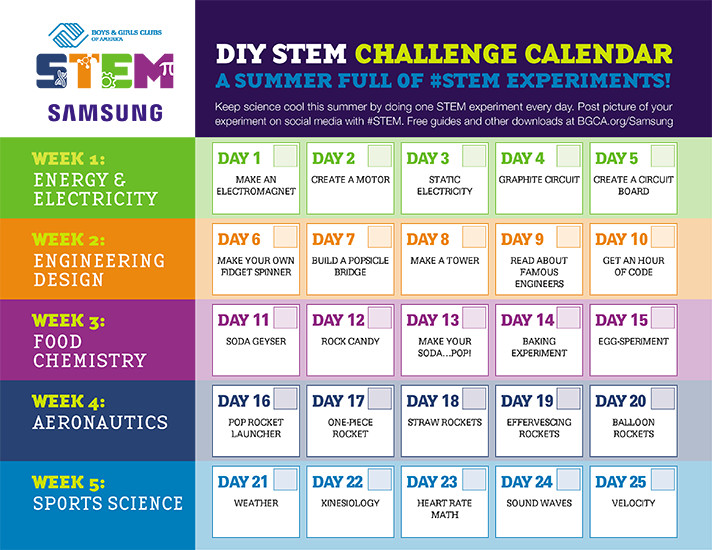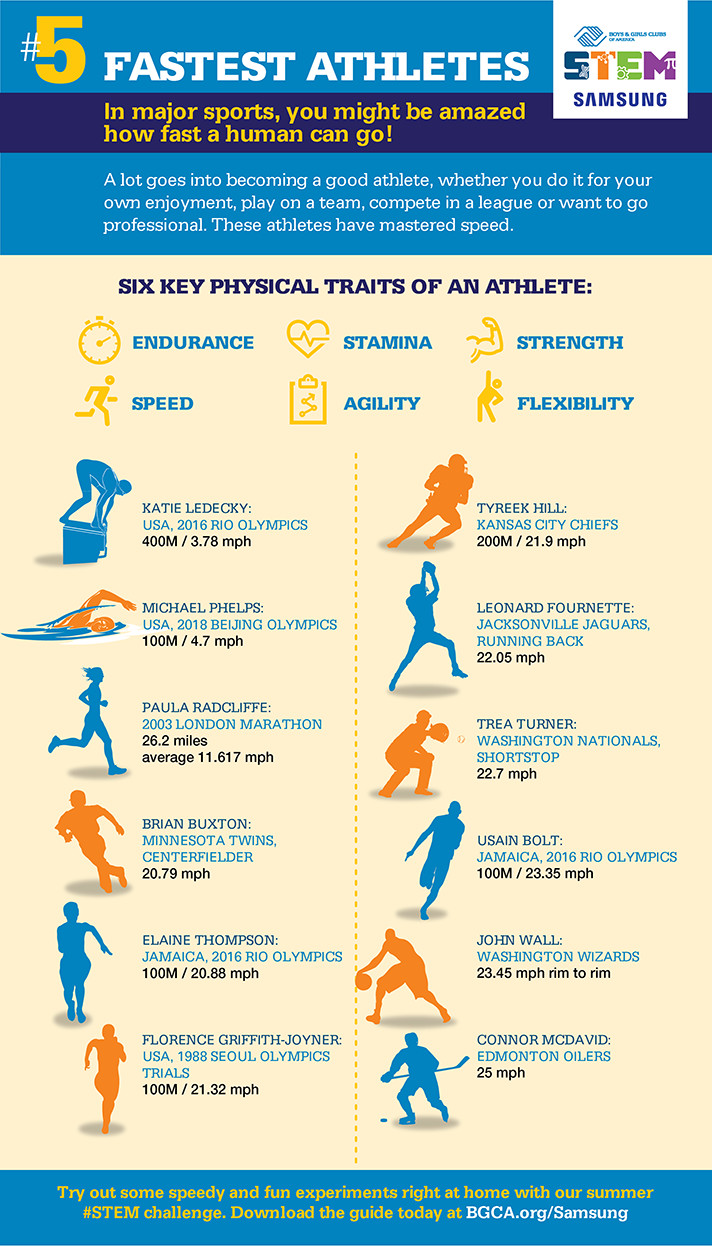5 Weeks of DIY STEM Projects

For the bajillionth time, I’m going to say that I was not a fan of science in school. I didn’t enjoy it. The information didn’t stick like it needed to. I have maybe two positive memorable science-class related experiences that I look back on and smile. We didn’t have anything fun like robotics back then. Kids today have so many more opportunities to learn about science in entertaining ways. That’s one of the reasons we spend so much time sharing about science-based entertainment such as games that teach about viruses, puzzle games that teach about coding, toys used for school robotics teams or TV shows that present STEM as being cool. Let’s be honest with ourselves and our kids: Science is more fun when you’re learning it through tactile methods.
While it’s standard curriculum for kids to learn science during the school year, many don’t have access to programs that engage them over the summer months. That makes learning more difficult once they return to school because they’re generally further behind than they were when they ended the prior school year. In preparation for summer, Samsung teamed up with Boys & Girls Club of America to prepare a 5-week DIY STEM program to curtail summer backslides. I know, I know. You’re looking at the calendar and wondering why I didn’t share this information at the BEGINNING of the summer as opposed to a week before most kids head back to school. That’s simple. I didn’t know about it until they reached out to me with an interest in sharing it with you. Just because it’s not summer, doesn’t mean there isn’t a place for this in our lives. Whether your kids are getting ready to start the new school year, have started back to school, are home schooled or you’re discovering this post while searching for activities for next summer, this is excellent information that is engaging, interesting and something that can be done at home… by non-sciency people.
The entire 5-week program is available for FREE over on the Boys & Girls Club of America website, but here’s the summary to help you shortcut if you want to piggy-back on existing topics that your kids are learning through board games or in school. Each week is subject-driven with a different hands-on experiment or task each day.
Week 1 STEM DIY: Energy and Electricity
Week 2 STEM DIY: Engineering Design
Week 3 STEM DIY: Food Chemistry
Week 4 STEM DIY: Aeronautics
Week 5 STEM DIY: Sports Science
Don’t worry though. These guides were created to be used by science-challenged individuals like myself. They don’t dive you right into complex concepts and terminology. They step you through it one at a time.
As an example, in the Energy and Electricity STEM DIY lessons you’ll learn to create electricity through the use of electromagnets and motors. If your first thought is, “I don’t know anything about electromagnets or motors so how can I teach it to my child?” then let me set your mind at ease. The very first experiment in week #1 is how to make an electromagnet followed by creating a motor in experiment 2. You’ll follow that up learning about static electricity, graphite circuits and wrap it up by creating a circuit board. Most of the experiments utilize household items like aluminum foil, tape and batteries although you may need to spend a few dollars to purchase some additional items such as insulated copper wire or modeling clay.
Week 2 steps it up with Engineering Design and teaches through building as well as some more traditional learning tactics. On Day 1, 2 and 3 you’ll build a fidget spinner, popcicle bridge and a tower. Day 4 might involve a trip to the library to read about some famous designers such as Alexandre Gustave Eiffel, Frank Lloyd Wright, Joseph Strauss, Leonardo Da Vinci and the Montgolfier brothers. On Day 5 by using the internet to learn to code. As I said before, this pairs well with the various games that teach about programming.
Week 3 is all about chemistry. But not just any chemistry… FOOD chemistry. What better way to learn about how chemicals interact than by showing ways that it’s used in everyday life. I mean, seriously, if my science teacher had taught about chemical reactions by having us bake a cake then I might have considered working on a PhD! In this case, the experiments primarily utilize products found in a kitchen, but aren’t strictly about food. Day 1 and 5 are making a Soda Geyser and using eggs to learn about osmosis. The other three days you’ll be making rock candy, soda pop and baking.
Did you know that force, drag, lift and weight are the four building blocks of aeronautics? Each day this week you’ll be learning about different types of rockets including making a pop rocket launcher, a one-piece rocket, a straw rocket and a balloon rocket. The really exciting one takes place on the 4th day where you’ll be using effervescing antacid tablets (huh? Oh. Plop, plop, fizz, fizz. Got it.) to create an appropriately named effervescing rocket. As with all the other weeks, each project includes conversation starters like addressing what you could do to improve the outcome.
The final week not only engages the mind, but also the body by showcasing how exercise, health and how the body works through a behind the scenes look at sports. If your kids have ever been engaged in a sports program, either personally or as a fan, you know that the weather can dramatically impact the players’ performance. The first sports science activity uses footballs to teach how a football reacts in rain, wind, extreme cold and extreme heat. On the second experiment of the science through sports STEM lesson, you’ll use paper towels, balloons and paper clips to learn about Kinesiology. There may or may not be a reference Victor Cruz’s touchdown salsa in the project. How fun is that?! You’ll wrap up the week and the DIY STEM projects with studies of heart rate math, sound waves and velocity.
The mission of Boys & Girls Club of America is to set kids on the path toward success and they are able to do that thanks to partnerships with companies such as Samsung. In addition to the DIY STEM initiative by Samsung, local chapters employ a variety of programs to provide a safe environment to exercise and learn healthy habits, to prepare for their future and to build lasting friendships. They’re able to assist nearly 4 million kids every year through their efforts. If you know of kids who could utilize such services, find a local club. If you’re interested in assisting in their mission, you can volunteer or provide financial support. If you simply need a resource for DIY STEM ideas, they have you covered there also. Be sure to follow them on Facebook and Twitter to see what else they’re engaging in!
Which STEM experiment are you most excited about?















This is awesome! A great list of varied STEM projects. This also gets science into the more practical areas for kids to relate to.
Can’t wait to try some of these STEM projects with my kids!
My tween daughter is a huge science lover and would enjoy so many of these fun project ideas! I think the food chemistry experiments would be her favorite, since she loves being in the kitchen.
These are so great! I love doing projects like this and they are so great for kids
I will definitely look into this next summer. Science is better learned through hands-on experiences. Books help a lot, but seeing, doing, and engaging in activities make the kids retain more knowledge.
These projects sound amazing. My son would absolutely love doing these. He is so into science!
I had no idea that there was something like this that would provide so many ideas for fun activities. I could definitely see doing some of them during school vacations.
A great resource for keeping the kids engaged without having to do all the lesson planning!
I will have to keep this in mind for my girls who both love science.
These are some great ideas.
Gotta love STEM projects!
Cool
What a great list of STEM projects. My favorites are Food Chemistry and the Anatomy of a Rocket. They both sound like a lot of fun.
I was valedictorian and we had to make bridges in my senior year. It was a rude awakening for me. I think all students should be forced to make things with their hands.
this information is wounderful. thank you
I was not able to find the Samsung link for the free materials
We live overseas, and I would love to do the program with my daughter – this looks like a very well done program, and I would love to access the 5-week free program
It does appear this is a U.S.-based program for them. If you drop them a line, they might be able to work something out for you!